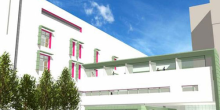Atrial Fibrillation
Atrial fibrillation (AF) can be a very troublesome heart rhythm disorder. It is said to occur when the heart beat is completely out of rhythm, with apparently random intervals between successive beats. This can lead to symptoms of palpitation, reduced exercise capacity, breathlessness, chest pain, and dizziness.
In many cases there is no apparent cause ("lone AF"); often there is a history of high blood pressure. AF may accompany other heart disorders eg valve disease, cardiomyopathy and ischaemic heart disease.
There are 3 main types of AF:
1. Paroxysmal AF. Here the abnormal rhythm comes and goes spontaneously or with administration of a drug.
2. Persistent AF. Here the rhythm gets stuck in AF and it requires DC cardioversion to correct.
3. Chronic AF. Here even cardioversion does not correct the rhythm.
Treatment
There are 3 main prongs to treatment in AF.
1. Anticoagulation. AF can predispose to stroke. Risk is assessed usng the CHADS2 algorithm (see below). Low risk patients receive Aspirin 75mg, higher risk Warfarin.
2. Rhythm control. Drugs which tend to maintain normal ("sinus") rhythm are beta-blockers, flecainide and amiodarone. AF ablation can also be successful.
3. Rate control. In chronic AF, the rate tends to race away too fast. This can be controlled with a beta blocker, calcium channel blocker and digoxin.
See the AGWS Network Guidelines for AF treatment.
CHADS2 Scoring system for stroke risk in AF
| Risk Factor | Point Score | Chads Score | %/yr stroke risk |
| Congestive heart failure | 1 | 0 | 2 |
|
Hypertension |
1 | 1 | 3 |
| Age >75 | 1 | 2 | 4 |
| Diabetes | 1 | 3 | 6 |
| Stroke or TIA history | 2 | 4 | 8 |

